Mobile users download apps nearly 77 billion times per year and spend more than 4 hours daily using them. On the other hand, since 2020, each individual user has installed fewer mobile apps on their smartphones.
Understanding user needs has become much more than just a nice touch. It is now a business necessity, and collecting feedback is the quickest way to uncover users’ thoughts about the mobile app firsthand.
Our Mobile App Feedback 2023 Report shows who collects user feedback, how they do it, how effective it is, and what can help you get the most out of it. Read on to get the TL;DR, but we recommend downloading the report for the full experience.
Mobile App Feedback 2023 Report: Key trends and insights
The Mobile App Feedback 2023 Report was an unprecedented venture into how mobile app makers leverage user feedback in their daily work. We wanted to know their main challenges and how they tackle them with (or without) user feedback.
We were also curious how mobile app professionals perceived different channels and methods for feedback collection in terms of their effectiveness. That’s why we devised the Effectiveness Score to measure it.
This report provides a compelling snapshot of where the mobile app teams stand in terms of user feedback collection and the upcoming app feedback trends they should buckle up for.
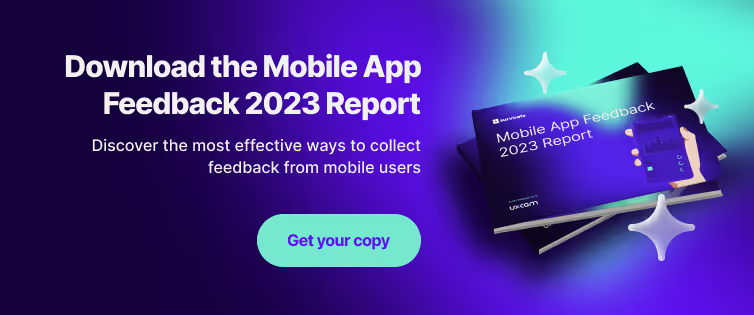
Top challenges in mobile app development
Our report shows that over half of the mobile app creators who took the survey (56.2%) consider product prioritization the biggest challenge in their work. While trying to figure out which features to develop next, some get lost between data from different sources. And some openly admit that guessing is the only way.
Nonetheless, a crashing 85.2% of our respondents confirmed they gather user feedback, and 85.7% of those use more than one channel to do so. One way or another, all players try to succeed in this quest. Now, let’s see how they collect insights.
The most common mobile app feedback collection methods
Mobile app creators can collect user feedback in multiple ways. In our report, respondents could choose from the following options:

- In-app surveys deployed within the app environment provide real-time feedback, enabling different teams to gauge sentiment toward the product, user experience, or specific features immediately.
- Email surveys provide comprehensive and in-depth insights, allowing the researcher to ask more complex questions. They can also reach a broader spectrum of users, including former or less active users.
- App Store reviews offer unsolicited, genuine reactions from users who post their interactions, making them invaluable for capturing spontaneous sentiments and broad user impressions.
- Social Media listening is great for understanding public perception and gathering real-time user feedback. At the same time, it may lack proper context and not accurately represent your app’s user base.
- Customer support interactions provide insights into specific pain points and challenges users face, often highlighting areas that need urgent attention.
- User interviews delve deep into individual user journeys, capturing the nuances, motivations, and detailed feedback that might not surface in other feedback mediums. On the other hand, they require more resources and time to capture and analyze insights.
Now, our research shows that the most popular ways to collect user feedback are through App Store reviews (70.5%), customer support interactions (64.7%), and user interviews (54.9%), followed by in-app (50.9%), and email (43.1%) surveys.

Each of these methods has pros and cons; however, combined, they offer a comprehensive, multifaceted view of user sentiments, preferences, and challenges, making them indispensable tools in app development and refinement.
The most effective mobile app feedback collection channels
As we said above, 85.7% of those who collect user feedback do so through more than one channel, while over two-thirds of surveyed app creators choose at least three channels.
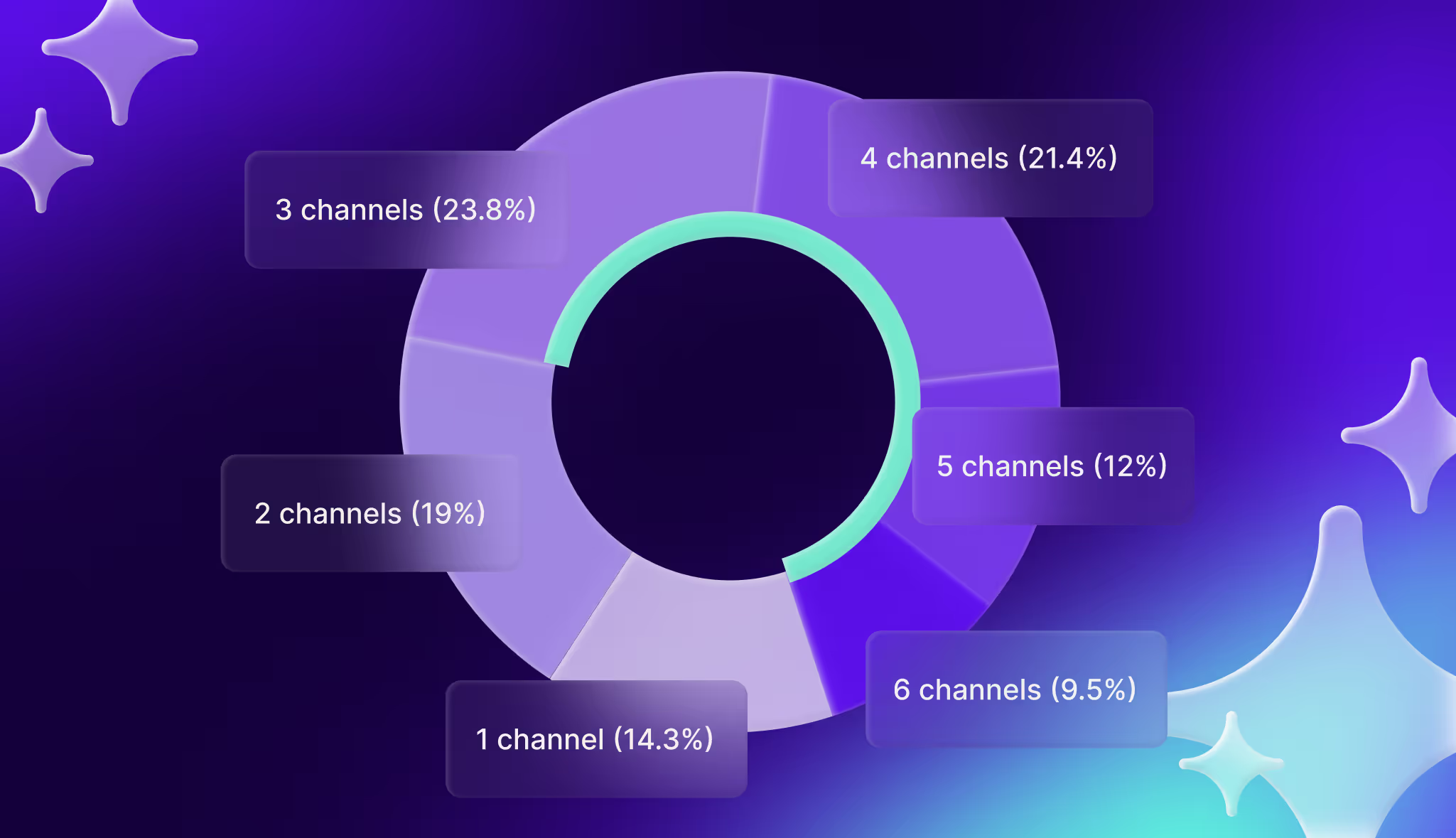
Specifically for the Mobile App Feedback 2023 Report, we created an Effectiveness Score. We calculated it by taking the number of respondents who rated their feedback collection methods as effective (4) or very effective (5), dividing it by the number of all responses to the question, and multiplying it by 100%.
With the formula in mind, it turns out that when the combination included in-app surveys, the Effectiveness Score was rated at 65%. Respondents who don’t use in-app surveys rate their efforts at 57%.
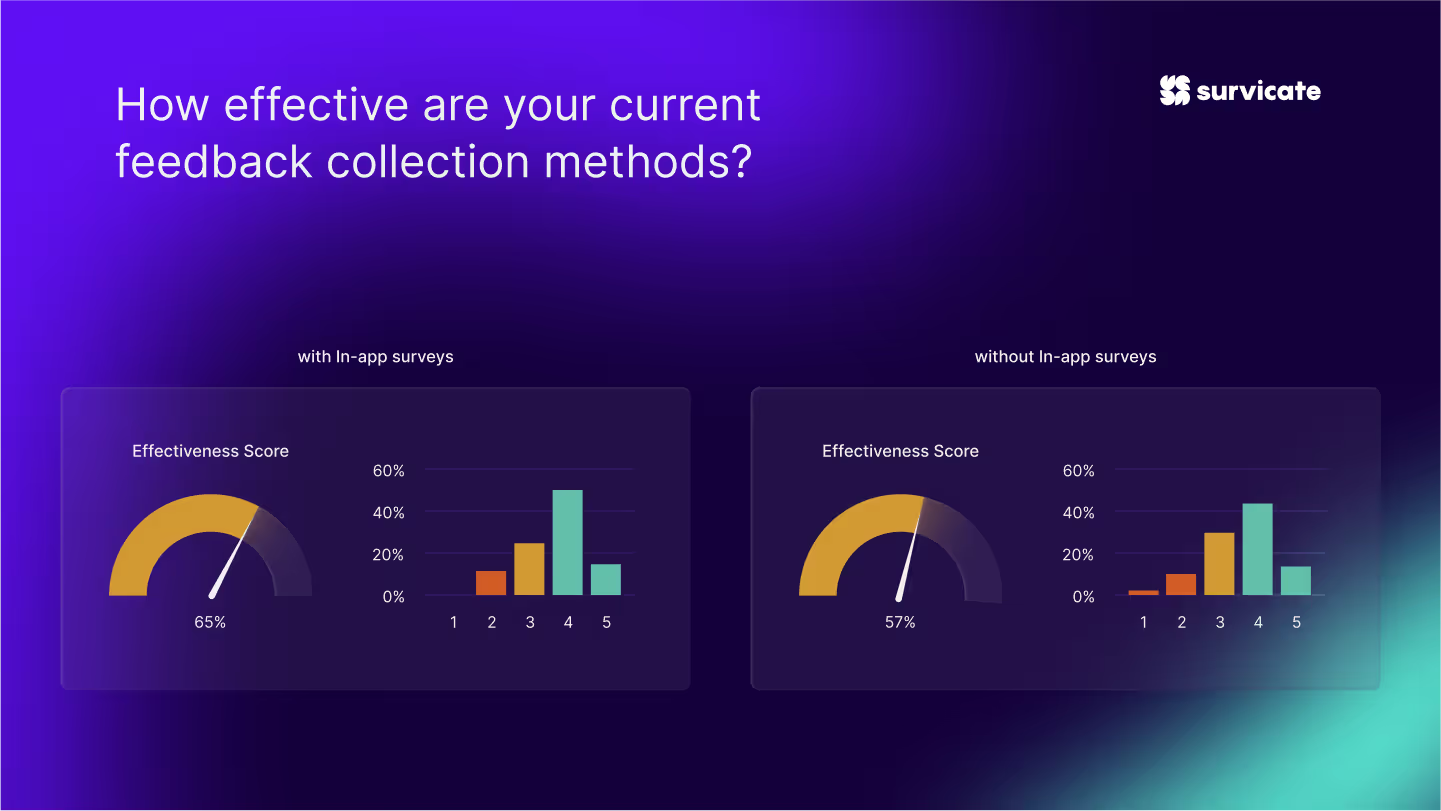
As you can see, adding in-app surveys can improve the effectiveness of the feedback collection process by 8%. That’s a firepower boost a seasoned player wouldn’t like to miss out on.
Obstacles in implementing user feedback
Collecting user feedback is one thing, but putting it into action is yet another part of the task. Seemingly, a much more difficult one. According to our survey, a whopping 84% of mobile app creators had trouble implementing user feedback.
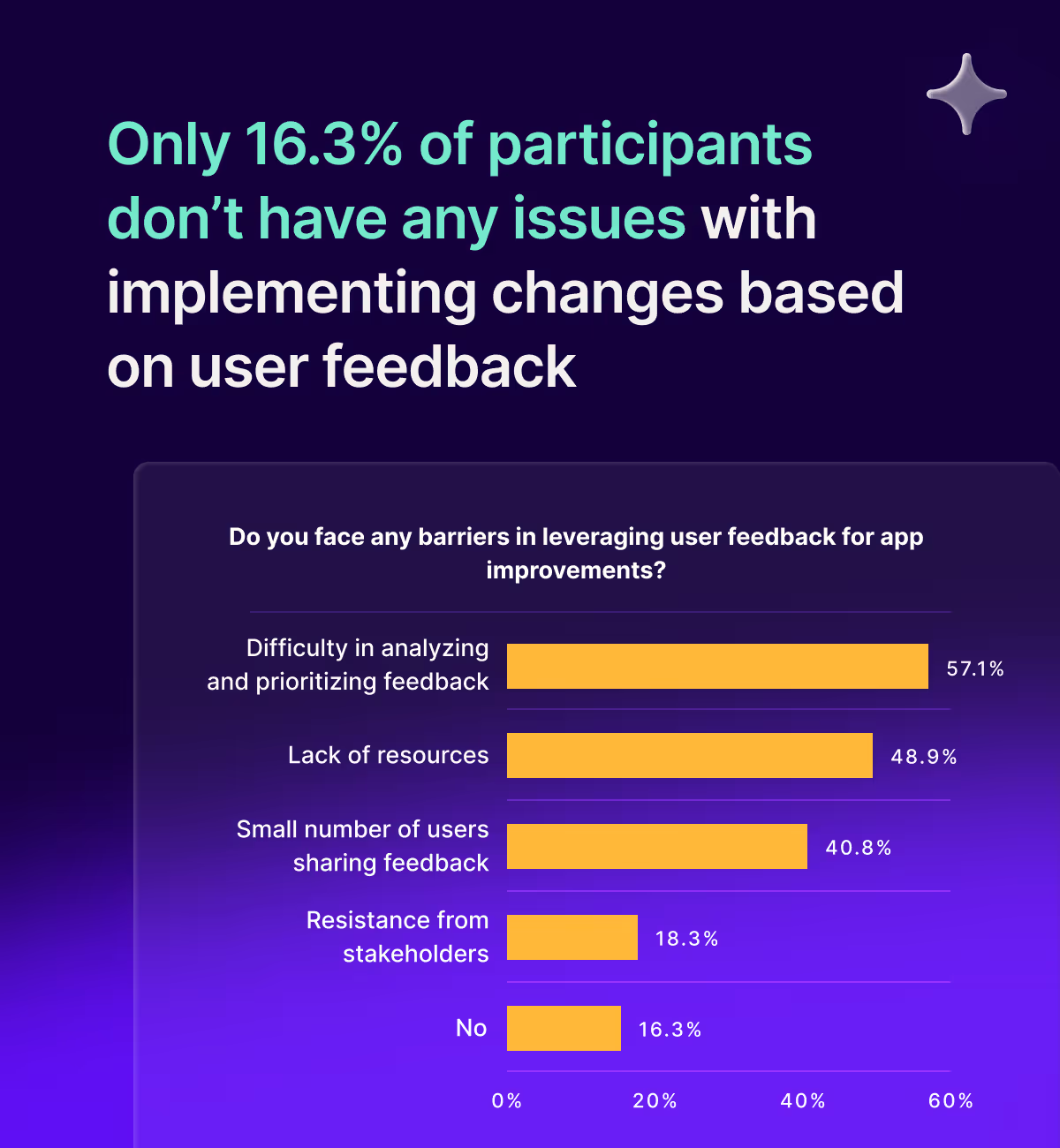
The majority of surveyed mobile app makers (57.1%) struggle with analyzing and prioritizing feedback. It doesn’t come as a surprise if we consider the fact they use various feedback collection methods simultaneously. Handling multiple data streams to build the big picture requires skills, time, and usually some auxiliary tools.
This is linked to the next pitfall marked by almost half of all respondents (48.9%)—a lack of resources, such as time, budget, and/or personnel. Again, managing feedback that comes in different forms and from different sources requires resources to be able to create a lovable mobile app.
Sometimes, it can wear app makers down, and it may seem impossible to succeed. Fortunately, there are mobile app trends that can fix the balance.
AI tools in feedback analysis and prioritization
One thing is sure this year—there’s no talking about any trends without at least mentioning AI. And for a good reason. AI tools and AI-enhanced features floor the gas pedal of all tedious processes in mobile app development. That includes user feedback analysis but also much more—desk research, copywriting, and coding.
“It helps me summarize feedback from the users and surveys.”
UX Researcher at a small-sized business (1-50 employees)
“Copywriting; it helps solve software engineering tasks.”
Product Manager at a small-sized business (1-50 employees)
42.1% of surveyed mobile app creators admitted to using some AI tool. Not only does it have the potential to make the entire feedback management faster, but with proper training, it can be much more efficient and less vulnerable to providing biased results.
And now, for the best part, AI is not only a mobile app feedback trend—at least at Survicate. We’ve added some powerful AI features to our survey software:
- AI-based recommendations in the templates library—we started small but meaningful. More than 160 survey templates are available in Survicate, so having your personal AI helper that selects the perfect ones depending on your needs may save you a lunch break.
- Our AI survey creator goes a step further to create surveys almost automatically. All it takes is a short sentence or two describing the goal of the survey. After 20 seconds, the survey is cooked and ready to serve to your users.
- AI feedback analysis—no more tedious after hours over open-ended questions analysis. Our product does it for you. Insights Hub automatically categorizes responses into thematic groups, taking it off your shoulders and schedule.
- AI-based chat—ask any questions about your feedback to Research Assistant and get a precise answer based only on your feedback data. Importantly, it shows the exact pieces of feedback, so you can track everything down to the root.
Download your copy of the Mobile App Feedback 2023 Report for more valuable insights.








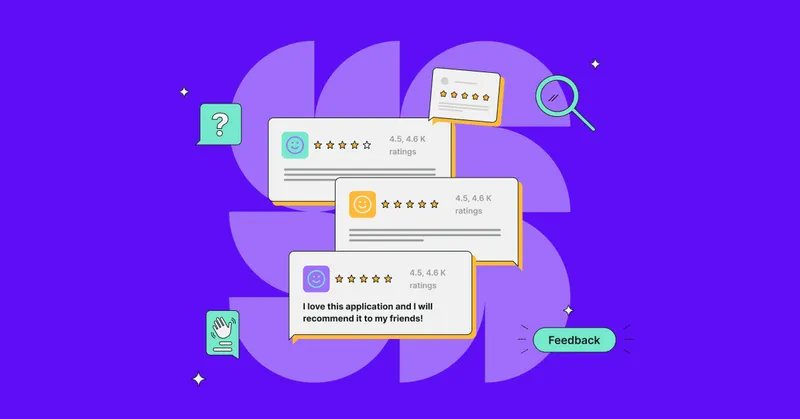
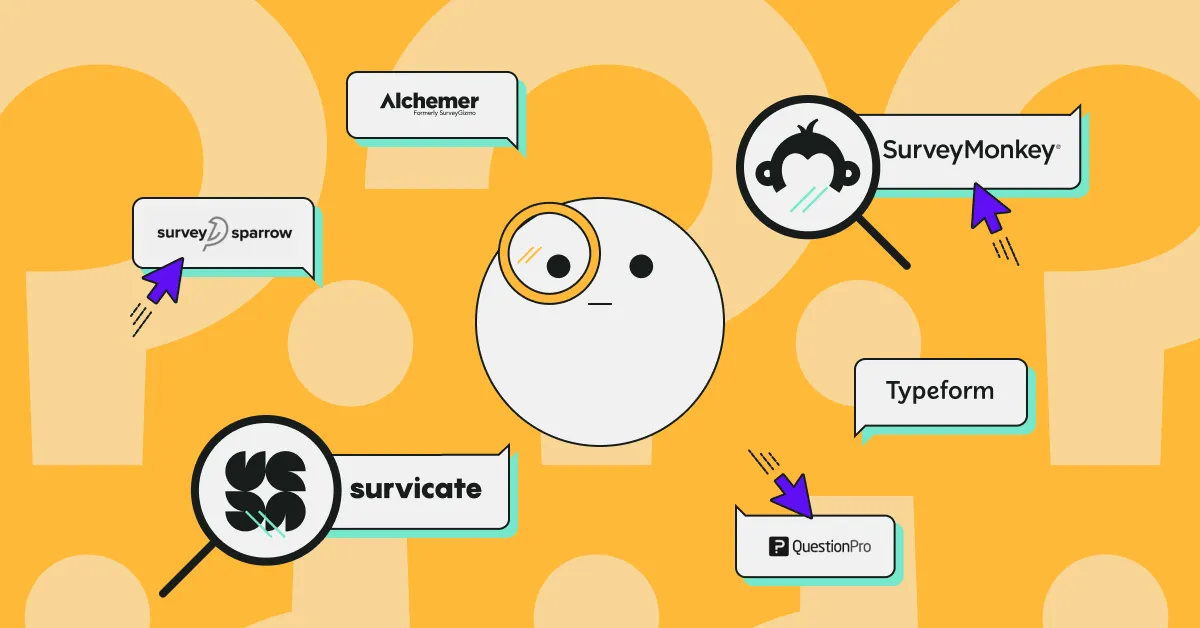

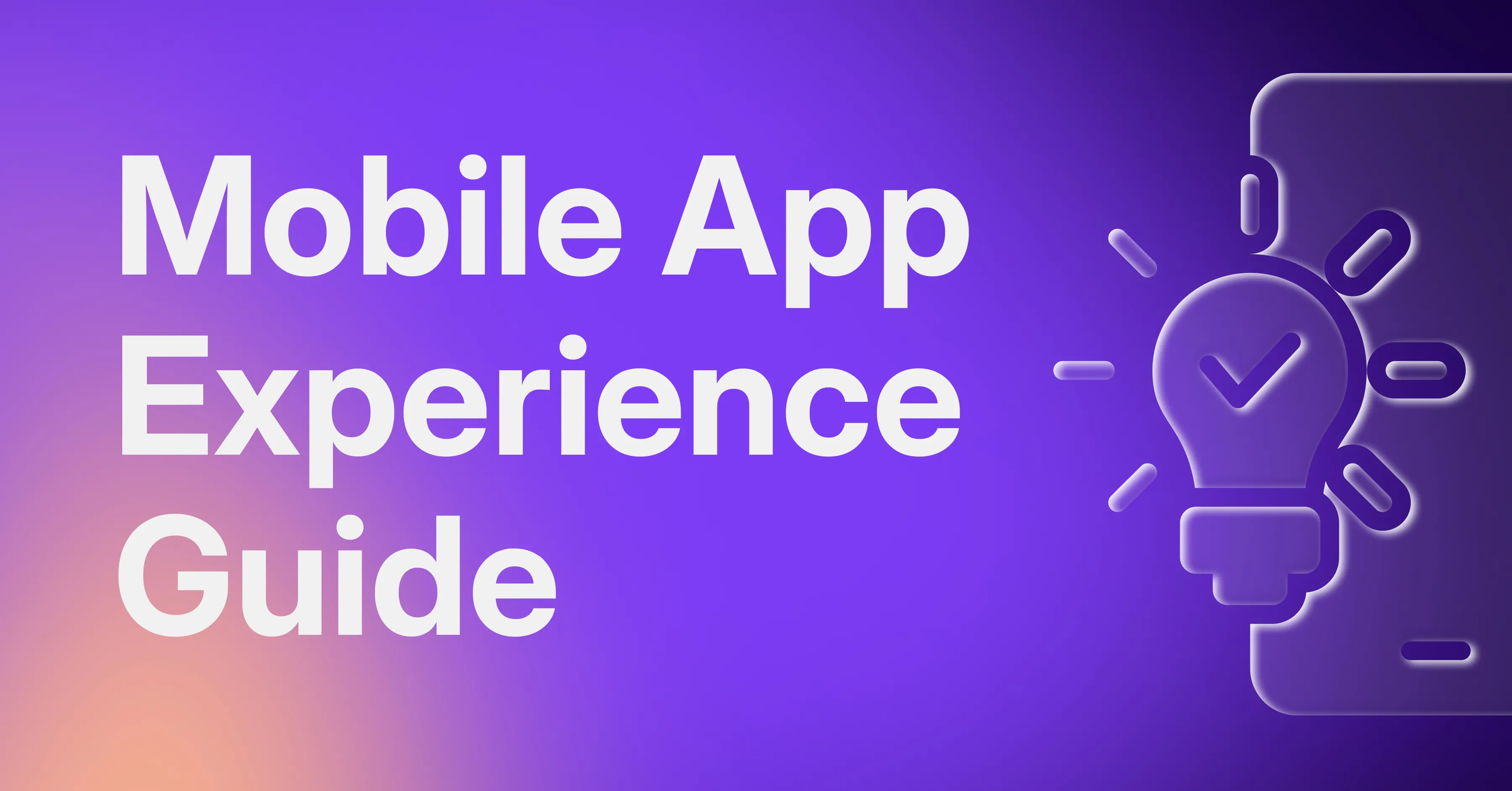



.svg)

.svg)



